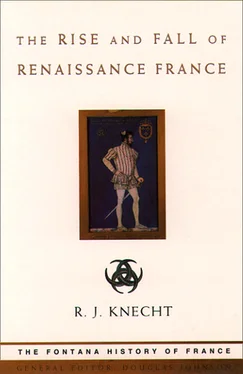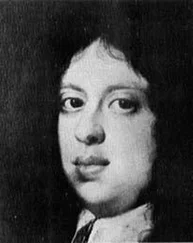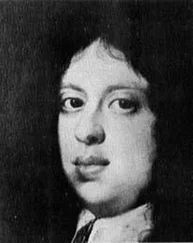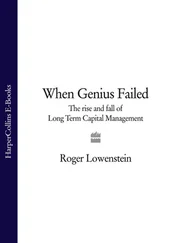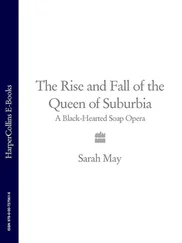On 14 January 1526 the text of the Treaty of Madrid was brought to Francis. In it, he agreed to abandon Burgundy and Tournai, give up his rights in Italy, and rehabilitate Bourbon and his accomplices. He also deserted his allies, the king of Navarre, the duke of Guelders and Robert de La Marck. His two sons were to replace him as hostages in Spain. However, on the eve of signing the treaty, Francis formally protested before several French witnesses, including two notaries, that the concessions he was about to make were null and void. That afternoon, in front of all the plenipotentiaries, he swore to observe the treaty and to return to prison within four months if its ratification failed to materialize.
Francis was detained at the Alcázar, probably for health reasons, till mid-February. On 20 January he was betrothed by proxy to Charles’s sister Eleanor, and on 13 February, Charles came to Madrid and spent six days in his company. The two monarchs went to Illescas where Francis was introduced to Eleanor. On 19 February, Charles left for Seville to marry Isabella of Portugal, while Francis set off on his journey back to France. He was exchanged for his sons on 17 March on an island in the River Bidassoa. After setting foot on French soil, he rode full tilt to Bayonne where his mother, sister, ministers and friends were waiting for him. On 20 March he attended a service of thanksgiving in Bayonne cathedral.
Following his return home, Francis spent several months touring south-west and central France. It was probably at Mont-de-Marsan in March 1526 that he first met Anne de Pisseleu, who was to replace Françoise de Châteaubriant in his affections. She was eighteen and admired for her beauty, intelligence and vivacity. By 1527 she had joined the king’s ‘fair band’ of ladies. In 1531 she became the governess of his daughters, Madeleine and Marguerite, and about 1534 Francis married her off to Jean de Brosse, soon to become duc d’Etampes. Thus did Anne become duchesse d’Etampes, the name by which she is best remembered. Depite her marriage, she remained at court where she came to exert a powerful political and artistic influence.
In October 1526 the bodies of Queen Claude and her infant daughter Louise, whose funerals had been postponed on account of the war, were taken from Blois to the abbey of Saint-Denis, where they were buried on 7 November. And on 30 January 1527 the king’s sister Marguerite took as her second husband Henri d’Albret, king of Navarre, who had escaped from prison in Pavia. The marriage was politically significant, since Henri’s claim to Spanish Navarre had yet to be satisfied by the emperor. After visiting her small kingdom, Marguerite returned to court where in June 1528 she attended the wedding of her sister-in-law Renée with Ercole d’Este. On 16 November, Marguerite gave birth to a daughter, Jeanne, who was to become the mother of King Henry IV.
Francis’s homecoming in March 1526 was followed by a distribution of honours comparable to that of 1515. Bourbon’s treason and the slaughter of so many noblemen at Pavia had created numerous vacancies in the royal administration. The king also wished to reward people who had been loyal to him during his captivity. Foremost among the new appointees were Anne de Montmorency and Philippe Chabot de Brion. Both had been brought up with Francis, had shared his captivity and had helped to bring about his release. Montmorency was thirty-one years old and a scion of one of the oldest and richest aristocratic houses. In August 1522, after serving in several military campaigns, he had become a marshal of France, a knight of the Order of St Michael, and a royal councillor. Now, on 23 March 1526, he was appointed Grand maître de France (in place of René of Savoy) and governor of Languedoc (in place of Bourbon). As the official head of Francis’s household, Montmorency became one of his principal advisers. He was a strict disciplinarian and a religious conservative. In January 1527 he married Madeleine of Savoy, daughter of the king’s deceased uncle, René. She brought Anne a large dowry which increased his already considerable fortune.
Philippe Chabot, seigneur de Brion, was appointed Admiral of France on 23 March 1526 in succession to Bonnivet, the king’s deceased favourite. Early in the reign Chabot had become a gentleman of the king’s chamber, captain of a company of lances , a knight of the Order of St Michael and mayor of Bordeaux. Among his military exploits was the successful defence of Marseille against Bourbon in 1524. In addition to the admiralship of France, he became governor of Burgundy. Though he received many gifts of land and money, he never became as wealthy as Montmorency. In January 1527 he married Françoise de Longwy, daughter of Francis I’s bastard sister.
Among other important appointments made by Francis in 1526, Galiot de Genouillac became Grand écuyer (Master of the Horse) in place of Giangaleazzo da San Severino; Robert de La Marck, seigneur de Florange, became a marshal of France; Jean de La Barre became comte d’Etampes and prévôt of Paris; and François de Tournon was promoted to the archbishopric of Bourges.
The first clear indication of Francis’s intentions regarding the Peace of Madrid was his refusal to ratify it. The imperial envoy, de Praet, who came to fetch the ratification, was sent home empty-handed. On 2 April 1526 the king complained that the treaty had been prematurely published in Antwerp, Rome and Florence. His subjects, he said, were angry and asked to be heard before the treaty was ratified. Early in May the viceroy of Naples, to whom Francis had surrendered at Pavia, came to Cognac hoping to persuade Francis to ratify the treaty. He was warmly welcomed by the king, who had not forgotten that he owed him both life and freedom, but he did not allow gratitude to stand in the way of his interests. On 10 May, Lannoy was informed by the king’s council that Burgundy could not be handed over because the king’s subjects would not allow such a diminution of his patrimony. Francis also argued that promises made under duress were null and void. However, since he wished to remain the emperor’s friend, he was willing to honour parts of the treaty which were acceptable to him and to pay a cash ransom. On 4 June the estates of Burgundy, meeting under the presidency of Chabot, endorsed the decision taken by the king’s council. Denouncing the treaty as ‘contrary to all reason and equity’, the deputies affirmed their wish to remain French. A similar declaration was made a few days later by the estates of Auxonne. In July a royal apologia intended for international consumption was published. It stressed the ‘fundamental law’ which forbade the king to alienate any part of his demesne, and enunciated the novel principle that no province or town could change ownership without the consent of its inhabitants. In addition to justifying his breach of faith, Francis acted to prevent an imperial conquest of Burgundy. Chabot inspected the province’s defences and put them on a war footing, but this proved unnecessary as Charles V lacked the means to invade. After an unsuccessful attempt by the prince of Orange to capture Auxonne, Charles disbanded his army. His dream of reuniting the two Burgundies had vanished for ever.
The League of Cognac (22 May 1526)
Francis’s repudiation of the Treaty of Madrid did not imply a readiness to resume hostilities with Charles V, at least for the time being. His chief aim was to recover his sons. To do this, he needed to put pressure on Charles by drawing closer to other European powers. On 15 May he ratified the Treaty of the More and on 22 May formed the ‘Holy’ League of Cognac with Venice, the papacy, Florence and Milan. Though ostensibly directed against the Turks, its real purpose was to expel imperial forces from Italy. Charles V had intended to go there to be crowned emperor by the pope. Now, because of the league, he felt obliged to stay in Spain and prepare for a new conflict. The allies were confident of success: the imperial army in Italy was penniless and disorganized, so Francis still hoped to recover his sons for a cash ransom. Charles, however, would not hear of this. ‘I will not deliver them for money,’ he declared. ‘I refused money for the father: I will much less take money for the sons. I am content to return them upon reasonable treaty, but not for money; nor will I trust any more the king’s promise, for he has deceived me, and that like no noble prince.’
Читать дальше
